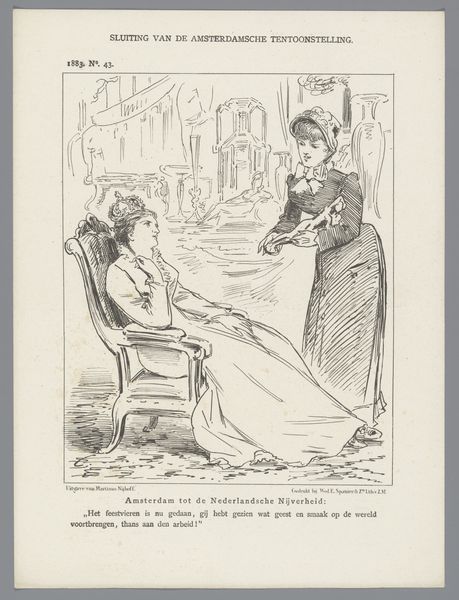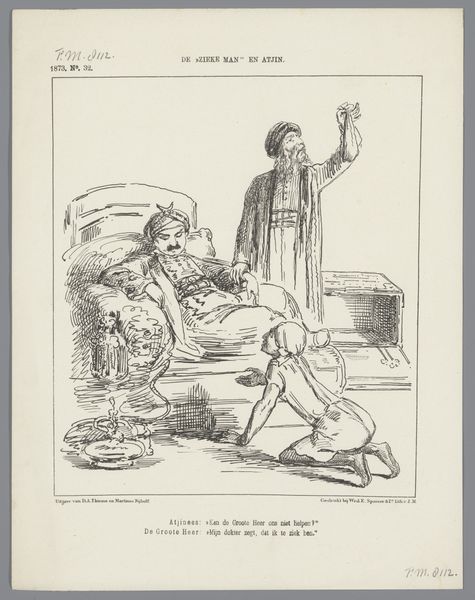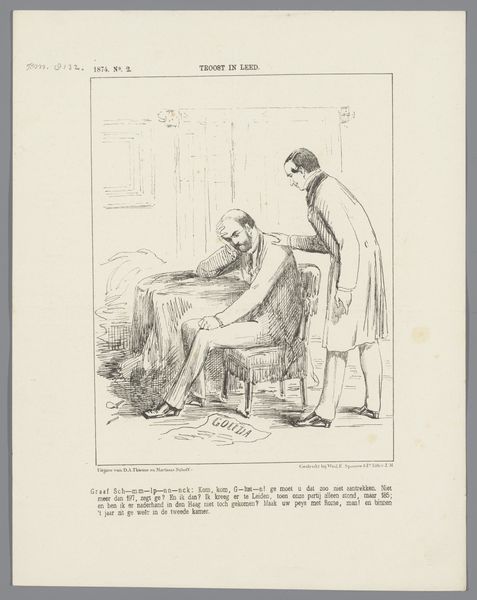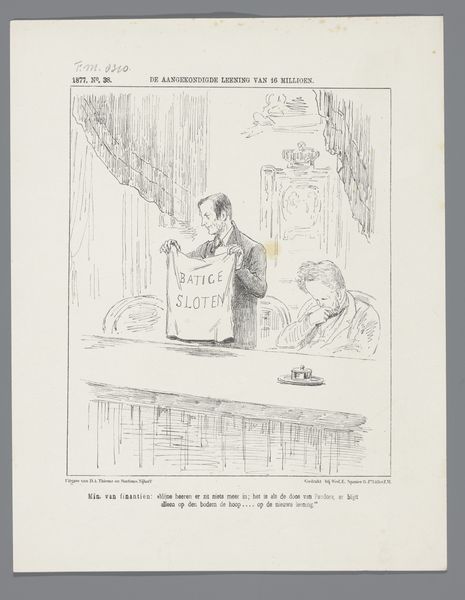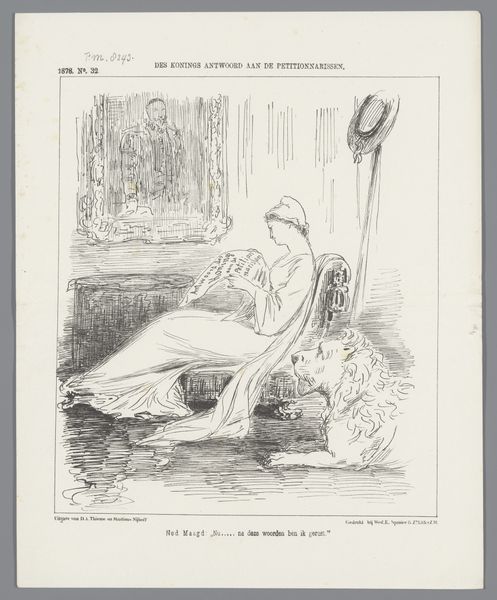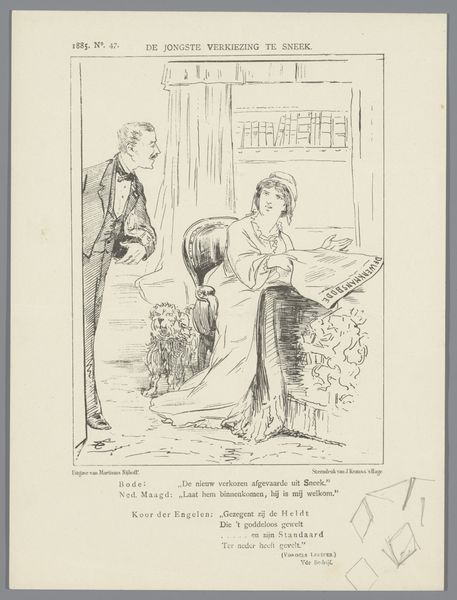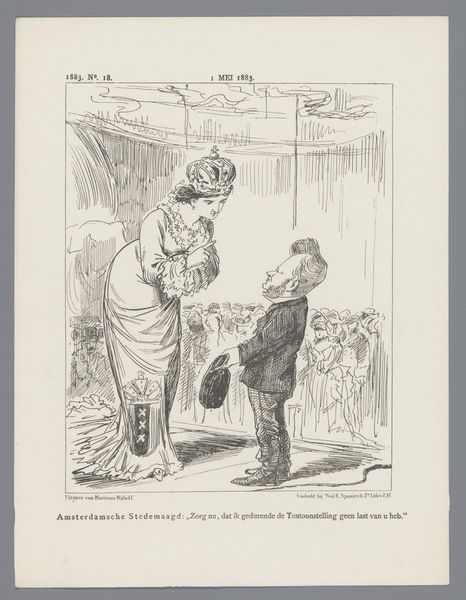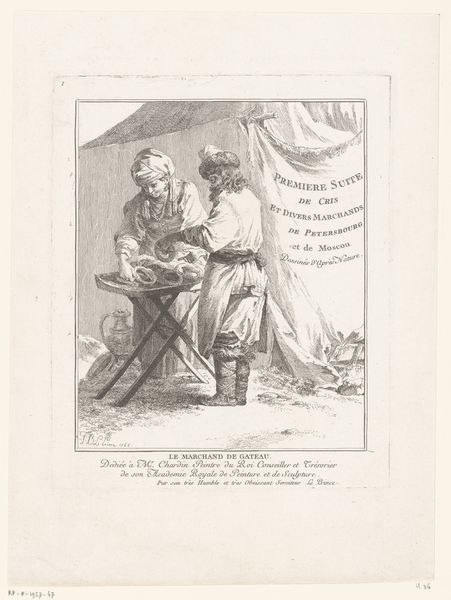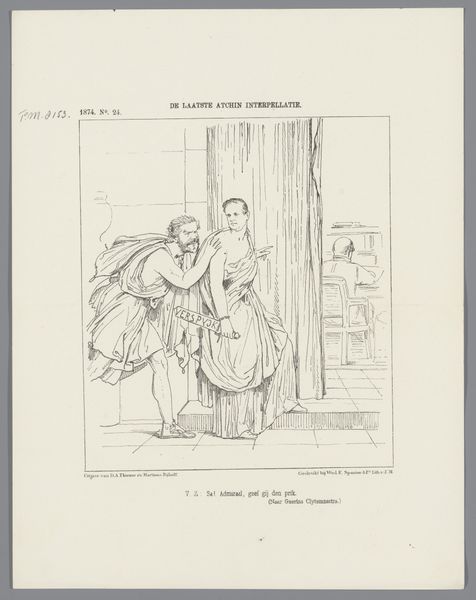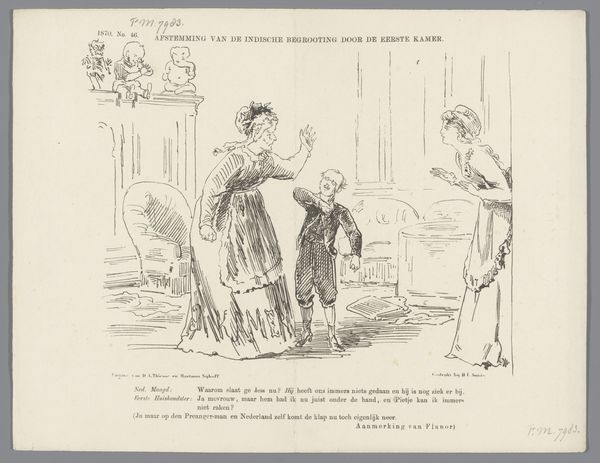
drawing, print, ink
#
portrait
#
drawing
#
dutch-golden-age
# print
#
caricature
#
ink
#
orientalism
Dimensions: height 275 mm, width 215 mm
Copyright: Rijks Museum: Open Domain
Editor: This is a political cartoon about the Dutch East Indies from 1882 by Johan Michael Schmidt Crans, rendered in ink as a print. It looks like a conversation between two figures, one labeled "Moederland" – Motherland, presumably the Netherlands – and the other representing the colony. The whole thing has a sarcastic, critical mood to it. What’s your take on it? Curator: This work, using ink and printmaking, implicates the technologies and material processes by which political ideologies were disseminated. The mass-producible nature of the print directly connects to the exploitative actions it depicts, allowing the artist to reach a wide audience and engage the consumers of Dutch goods, prompting reflection on their complicity within colonial structures. What do you notice about the material representations? Editor: The contrast between the finely dressed "Indies" and the plain "Motherland" seems intentional, a visual comment on wealth disparity and perhaps the extraction of resources. Curator: Exactly. And consider the very paper it's printed on. Where was it sourced? Who labored to produce it? The cartoon itself becomes part of the system of consumption and power it critiques. Notice the crown upon the figure on the right. How might access to such luxuries define the fraught dichotomy? Editor: So you're saying it's not just about the image, but also the object itself as a product of its time, complicit in the very system it critiques. I hadn't thought about it that way. Curator: Precisely. By examining the means of production and dissemination, we see the complex interplay of art, labor, and social critique embedded within this seemingly simple cartoon. The piece serves as a stark reminder of the material conditions underlying political narratives. Editor: This has broadened my perspective; I’m now seeing it less as a straightforward critique and more as a layered object entangled in the very system it depicts. Curator: It’s in understanding that material entanglement where deeper insights can be gleaned, don't you agree?
Comments
No comments
Be the first to comment and join the conversation on the ultimate creative platform.
